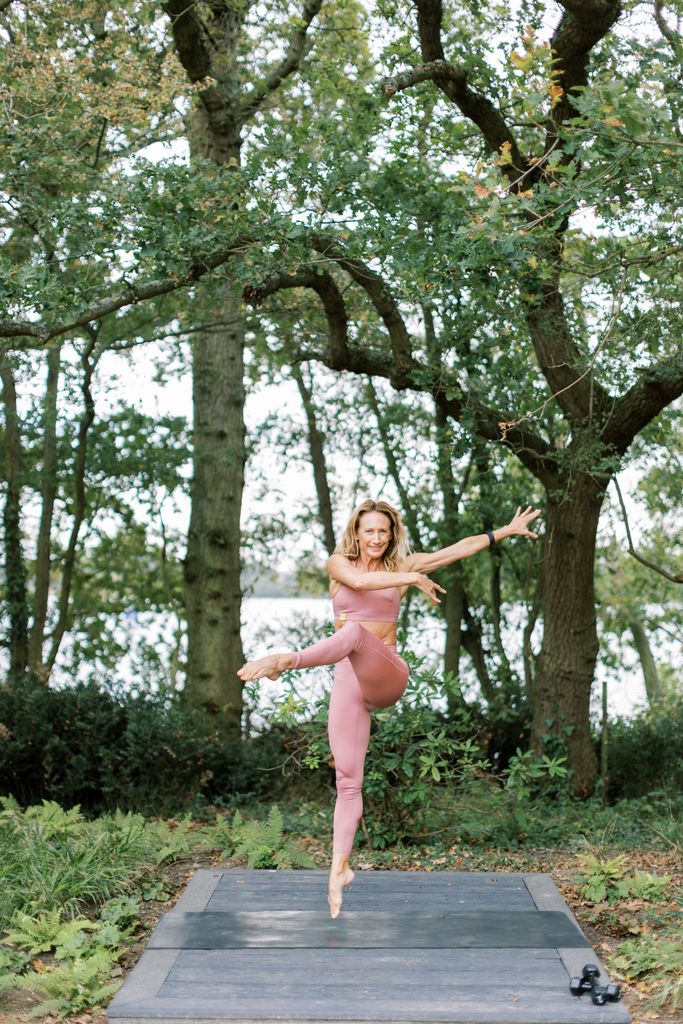When you think of pelvic floor exercises, a Kegel most likely springs to mind. The tightening and holding of your pelvic floor muscles will of course help, but there is another way to work out this crucial muscle – and it's way more fun.
We caught up with celebrity personal trainer Monique Eastwood, 57, who is raising awareness of the importance of being open about pelvic floor issues, even having an expert in the subject on hand during her retreats to destigmatise the topic.
"Pelvic floor issues shouldn't be a barrier when it comes to exercise," says Monique, before adding: "But like anything, unless you have issues with it, nobody wants to talk about it.
"It shouldn't be an embarrassing issue, but unfortunately nobody wants to say that they suffer from it because they feel like they've got a dysfunctional body, and women are proud, so it is such a sensitive subject."
Remove the stigma around pelvic floor issues
On how she erases the stigma during her classes and retreats, Monique explains that she brings up the pelvic floor in each session, normalising the discussion. "I tend to generalise when I talk about pelvic floor weakness, knowing that there may be an issue in the group class. I am just making sure they understand how to engage their pelvic floor and exercise it like any other muscle in the body.
"I really drop it into conversation all the time, because it's not only a matter of having a tight pelvic floor, it's a matter of having an elastic pelvic floor that is functional.
"Pelvic floor dysfunction is not something we talk about often, not even with our friends so it's important for me to try and normalise the discussion, interjecting it into my training sessions."
Why does our pelvic floor weaken in menopause?
When our oestrogen drops, we start to lose muscle mass and your pelvic floor is a muscle, Monique explains.
"Your pelvic floor is the floor of your core," she adds. "You've got to keep thinking of exercising it to lift the bladder and the bowel. By strengthening your pelvic floor, all those internal organs are supported."
INSPIRATION: Menopause made me feel like an imposter – but now I'm more liberated than ever
How can we support our pelvic floor?
1. Multidirectional moves
Multidirectional moves, such as curtsy lunges and dance-inspired workouts, are key to strengthening your pelvic floor.
"By moving in different directions, you're opening and closing those muscles," Monique explains. "I've always done multi-directional moves and I've seen the benefits now I am 57.
"Without realising it, you're getting a stronger pelvic floor and a stronger core and you will notice a difference. One of my clients recently said to me, 'I just don't need to go to the bathroom as much,' but she didn't understand why. It's because she's strengthened her pelvic floor."
Watch Monique perform multidirectional exercises below...
2. Breathing
How we breathe during exercise is key to managing our pelvic floor, too. "When you're breathing, you are lengthening and contracting your core," Monique explains. "Your exhale is literally your core muscles contracting."
She adds that holding our breath, which we're inclined to do when we're struggling in a workout, can spell trouble for our pelvic floor. "You need to exhale, because if you hold your breath you're putting pressure on your pelvis. When you exhale, your diaphragm moves out of the way and your pelvic floor has somewhere to go."













